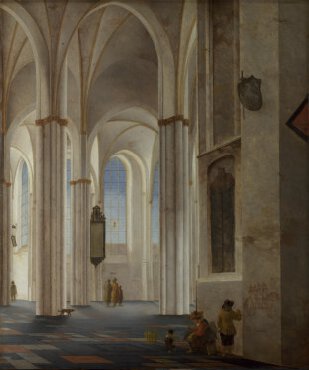National Gallery and Tate Modern
- cndartstudio
- Jan 16, 2018
- 3 min read
National Gallery Visit 1
The main reason for going to the National Gallery this time was to see The Execution of Lady Jane Grey by Paul Delaroche suggested by my tutor but it was unfortunately on tour until 2019 so I took the opportunity to examine other Old Master works focusing mainly on composition.
I also did a sketch of The interior of the Buurkerk at Utrecht by Peter Saenredam, a depiction of a large and magnificent white building, which, though quite a small painting, only 50x60 cm, is a very realistic work characteristic of Saenredam.
In order to give a sense of the huge size of the building Saenredam has made all the figures very small, placing people, a dog and a basket in the lower right corner, two smaller figures in the middle, and someone walking away in a corridor at the left hand side.
Reference: https://www.nationalgallery.org.uk/
National Gallery Visit 2
This time I went to see two exhibitions -
1. Exhibition: Drawn in Colour: Degas from the Burrell
This was a collection of works by Edgar Degas from the Burrell Collection in Glasgow; 13 pastels, three drawings, and four oil paintings.
I wanted to do sketches and analyse the technique of After the Bath, a woman drying herself done in soft pastel. This is a quite theatrical pose of a woman who seems to me could be a dancer or a performer, drying herself after a relaxing bath at the end of a long hard working day.
In terms of composition the woman is placed diagonally across the canvas as is common in Degas compositions. The thing I noticed was the range of mark-making Degas has in this work; lines of different sizes and shapes which, though simple, are very effective in the depiction of the towel - which I tried to replicate in my sketch.
2.- Exhibition:Lake Keitele: A Vision of Finland - Akseli Gallen-Kallela’s Lake Keitele
This was a collection of about 12 landscapes - different views of Lake Keitele in Finland. The paintings were predominantly in pale colours; delicate blues, pinks, yellows and greys, giving the exhibition room a silvery atmospheric appearance and a certain elegance.
My favourite painting in the collection was The Lake View, a detail of which I show below, and the thing that struck me most was the light, the amazing sky and its reflection on the water, which gave me a feeling of serenity.
The painting is in oil and Gallen-Kallela has used an interesting variety of techniques; impasto and narrow and wide brush strokes. His composition has trees in the foreground, the lake and an island in the middle ground and a two-part background; an Island on the right and a mountain farther away, all of which give the painting a very definite sense of depth.

Tate Modern: Modigliani Exhibition
I found the Modigliani exhibition very interesting and intended to study closely and sketch just one or two paintings. It was however so busy and much larger than expected, so I gave up that idea and instead went through all the rooms trying to absorb as many painting as I could.
The thing that struck me mostly about Modigliani’s work was the clear distinction between his early work and the later work with which we are most familiar.
His early work, around 1909, was mostly realistic-impressionistic portraits, which we can assume to be good likenesses of his sitters. Then in 1913/14 he began painting in a style reminiscent of ancient Egypt producing Caryatid and Egyptian figures which are very much in the distinctive Modigliani style we know; curves, oval faces, almond shaped eyes and long necks.
I notice however that even though most later Modigliani portraits show his sitters as having elongated faces and necks, almond shaped eyes and relatively little facial detail, he still seems to capture a likeness and convey an expression on the face of the sitter looking at the viewer.
I like very much his painting The Girl; you can almost feel the sadness in her eyes as she looks at you and I love the ochre colour palette.









Comments